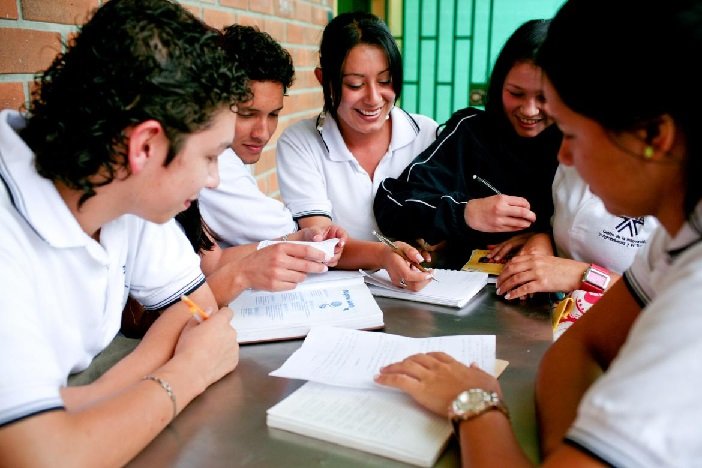
Introduction to Sex Education
Sex education is a topic that often sparks controversy and heated debates. It’s one of those subjects that people seem to have strong opinions about, based on their own personal beliefs or experiences. But amidst the misconceptions and misunderstandings surrounding sex education, it’s crucial to separate fact from fiction. In this blog post, we’ll debunk some common myths about sex education and shed light on why it is essential for our youth to receive comprehensive sexual health education. So buckle up as we dive into the world of sex ed and unravel the truth behind the misconceptions!
1: Sex education promotes promiscuity
Sex education is a topic that often sparks controversy and leads to many misconceptions. One common myth is that sex education promotes promiscuity among young people. However, this couldn’t be further from the truth.
Promoting safe and responsible sexual behavior is the main goal of comprehensive sex education programs. These programs provide accurate information about sexual health, consent, contraception methods, and sexually transmitted infections (STIs). By educating young people about these topics, they are empowered to make informed decisions about their own bodies.
Contrary to popular belief, teaching students about sex does not encourage them to engage in risky behaviors. In fact, studies have shown that comprehensive sex education actually delays the onset of sexual activity among teenagers and increases the likelihood of using protection when they do become sexually active.
By providing young people with knowledge about sexual health, we are equipping them with the tools they need to navigate relationships responsibly. Sex education helps promote healthy choices by emphasizing communication skills, building self-esteem, promoting abstinence as an option for those who choose it, and encouraging open dialogue between parents and children.
It’s important to debunk this myth because without proper sex education in schools or at home, young people may turn to unreliable sources such as peers or media for information. This can lead to misinformation and potentially harmful consequences for their well-being.
2: Sex education is only about teaching kids how to have sex
Sex education is often misunderstood as simply a way to teach young people how to engage in sexual activity. However, this misconception couldn’t be further from the truth. Sex education encompasses so much more than just the act itself.
First and foremost, sex education aims to provide accurate information about anatomy, reproductive health, contraception methods, and sexually transmitted infections (STIs). It empowers young individuals with knowledge that can help them make informed decisions about their bodies and relationships.
Additionally, comprehensive sex education also focuses on important topics like consent, healthy relationships, communication skills, personal boundaries, and decision-making. It encourages open dialogue between educators or parents and students or children – creating a safe space for questions and discussion.
By dispelling the myth that sex education solely teaches kids how to have sex, we can better understand its true purpose: equipping our youth with essential life skills for navigating their sexual health responsibly.
3: Parents are solely responsible for teaching their children about sex
Parents are undoubtedly an important source of information and guidance for their children, but the idea that they are solely responsible for teaching them about sex is a misconception. Sex education is a shared responsibility that involves parents, schools, healthcare professionals, and society as a whole.
While parents play a crucial role in shaping their children’s values and attitudes towards sexuality, relying solely on them to provide comprehensive sex education can lead to gaps in knowledge. Not all parents feel comfortable discussing this topic with their children or may lack accurate information themselves.
Schools have an essential role in providing age-appropriate and evidence-based sex education. Trained educators can address topics such as anatomy, consent, healthy relationships, contraception methods, and sexually transmitted infections (STIs). This ensures that students receive accurate information from reliable sources.
Healthcare professionals also contribute to sex education by offering guidance on reproductive health and providing access to contraceptives and STI testing. They can answer questions related to sexual development and help young people make informed decisions about their bodies.
Society as a whole has a responsibility to create an environment where open conversations about sex are encouraged without stigma or shame. By normalizing discussions around sexual health at home, school, and within communities, we empower young people with the knowledge they need to make safe choices.
The Importance of Comprehensive Sex Education
Comprehensive sex education is crucial for equipping young people with the knowledge and skills they need to make informed decisions about their sexual health. This type of education goes beyond teaching basic biology and addresses a wide range of topics, such as consent, healthy relationships, contraception, and STI prevention.
By providing comprehensive sex education, we empower young individuals to navigate complex issues surrounding sexuality in a safe and responsible manner. It helps dispel myths and misconceptions that can lead to risky behaviors or stigmatization. By promoting open dialogue about sensitive topics like pleasure, gender identity, and sexual orientation, we create an inclusive environment where everyone feels respected and valued.
Furthermore, comprehensive sex education is not just limited to schools; it also involves parents/guardians actively participating in the conversation. When parents are involved in their children’s sexual education journey, it fosters trust and ensures consistent messaging between home and school settings.
It’s important to remember that comprehensive sex education does not encourage or promote promiscuity; instead, it provides accurate information so individuals can make choices that align with their values. It empowers them to establish boundaries within relationships based on mutual respect.
In conclusion: Comprehensive sex education plays a vital role in empowering young people with accurate information about sexual health while fostering healthy attitudes towards relationships and self-identity. By addressing the diverse needs of students through inclusive curricula that go beyond biological aspects of reproduction alone – we can help ensure our youth have the tools they need for a safer future.
Addressing the Realities of Teenage Pregnancy and STIs
Teenage pregnancy and the spread of sexually transmitted infections (STIs) are real issues that need to be addressed through comprehensive sex education. Contrary to popular belief, providing young people with accurate information about sexual health does not increase their likelihood of engaging in risky behaviors. In fact, studies have shown that teenagers who receive comprehensive sex education are more likely to delay sexual activity and practice safe sex when they do become sexually active.
One of the main reasons for addressing these realities is the potential long-term consequences that can arise from unplanned pregnancies or contracting STIs at a young age. Teenagers may face challenges such as dropping out of school, limited career opportunities, financial burdens, and emotional stress when dealing with these situations.
By educating our youth about contraception methods, responsible decision-making, consent, and healthy relationships – we empower them to make informed choices about their own bodies and well-being. Additionally, teaching them how to communicate effectively with their partners helps foster mutual respect and understanding.
It is crucial to remember that abstinence-only approaches have been proven ineffective in preventing teenage pregnancies or reducing the rates of STIs. Therefore, it’s essential to provide comprehensive sex education programs that equip young people with knowledge on topics like contraceptive options (including condoms), regular STI testing/screening protocols as part of routine healthcare visits.
In conclusion
Addressing the realities of teenage pregnancy and STIs requires open conversations supported by evidence-based information provided through comprehensive sex education programs. By breaking down misconceptions surrounding these topics and equipping our youth with accurate knowledge about sexual health practices – we can help reduce unwanted outcomes while promoting healthier attitudes towards sexuality among young individuals.






